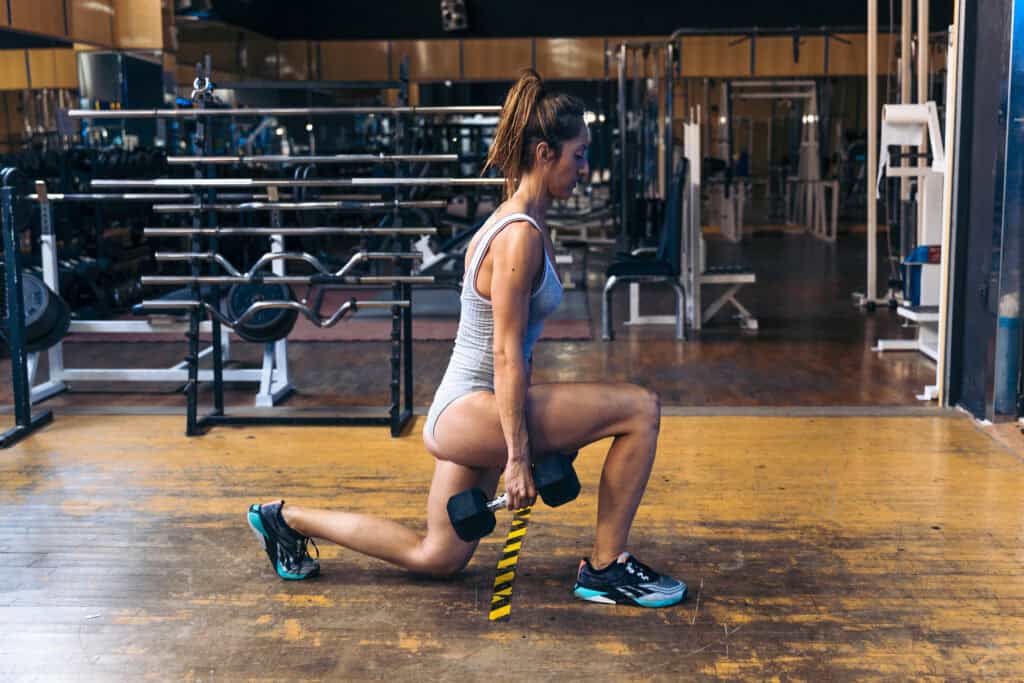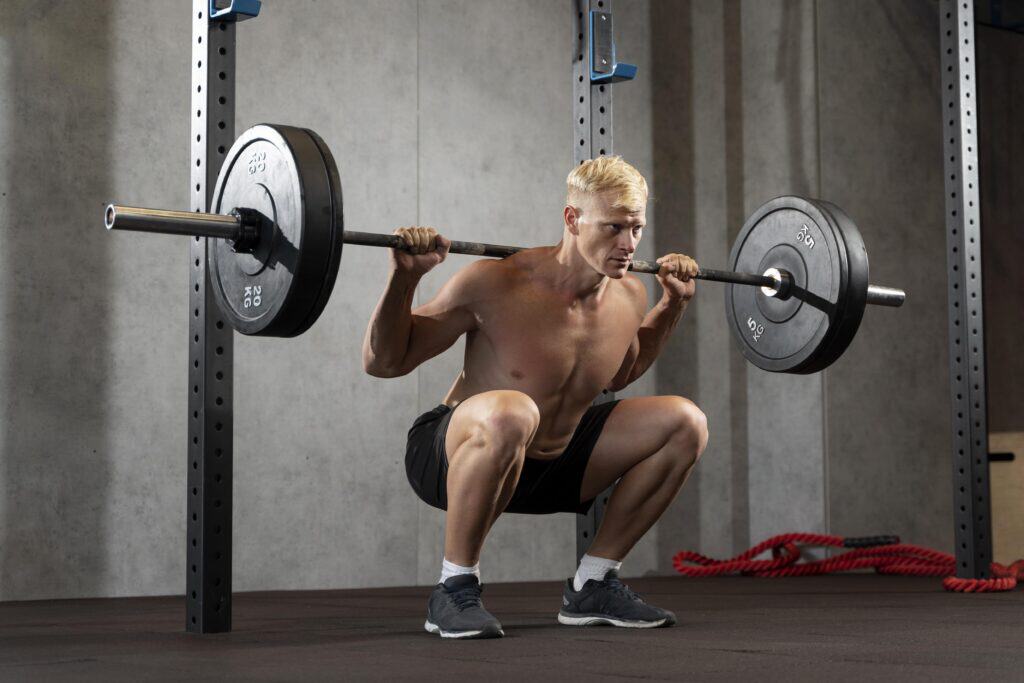When it comes to building strong, powerful legs, the debate between compound leg exercises like squats and unilateral exercises like lunges is a common one. Both have their merits, and understanding their differences can help you make informed choices to optimize your leg day routine. In this article, we will delve into the benefits of squats and lunges, backed by scientific research, to determine which might be better for you.
What are Squats?
Squats are a fundamental compound exercise that engages multiple muscle groups simultaneously. Primarily targeting the quadriceps, hamstrings, glutes, and calves, squats also activate the core and lower back muscles for stabilization. The versatility of squats allows for various modifications, including back squats, front squats, and goblet squats, each offering unique benefits.
Benefits of Squats:
- Muscle Activation: Squats are renowned for their ability to recruit a large number of muscle fibers, leading to significant muscle growth and strength gains.
- Functional Strength: The movement pattern of squats mimics daily activities such as sitting and standing, enhancing overall functional strength and mobility.
- Hormonal Response: Research indicates that compound exercises like squats stimulate a greater release of anabolic hormones, such as testosterone and growth hormone, which are crucial for muscle development and recovery .
What are Lunges?
Lunges are a unilateral exercise, meaning they work one leg at a time. This exercise targets the same muscle groups as squats but with a focus on one leg, providing a different stimulus. Variations include forward lunges, reverse lunges, and walking lunges, each emphasizing different aspects of strength and stability.

Benefits of Lunges:
- Muscle Imbalance Correction: Lunges are excellent for identifying and correcting muscle imbalances, as each leg works independently.
- Enhanced Stability: The unilateral nature of lunges challenges balance and coordination, which can improve overall athletic performance.
- Injury Prevention: By strengthening stabilizing muscles and improving joint stability, lunges can help prevent injuries .
Squats vs. Lunges: Which Leg Exercise is Better?
The answer to this question depends on your individual fitness goals and needs. Let’s explore some key factors to consider:
Muscle Growth and Strength:
- Squats: Due to the engagement of multiple muscle groups and the ability to load heavier weights, squats are often superior for overall muscle growth and strength development.
- Lunges: While lunges also build strength, they are particularly effective for developing unilateral strength and addressing muscle imbalances.
Functional Training and Mobility:
- Squats: Squats enhance functional strength, which translates well to everyday movements. They also improve hip and ankle mobility.
- Lunges: Lunges are excellent for improving dynamic stability and mobility. They mimic natural gait patterns, making them highly functional for activities such as running and climbing stairs.
Injury Prevention:
- Squats: When performed with proper form, squats strengthen the muscles around the knees and hips, potentially reducing the risk of injuries.
- Lunges: Lunges target stabilizing muscles and improve joint stability, which can prevent common lower body injuries .
Core Engagement:
- Squats: Squats require significant core stabilization, particularly in the lower back and abdominal muscles.
- Lunges: Lunges also engage the core, but with an added emphasis on balance and proprioception.
Leg Exercises Conclusion
Both squats and lunges offer unique benefits and can be integral parts of a well-rounded leg workout routine. Squats are ideal for building overall strength, muscle mass, and functional fitness, while lunges excel in correcting imbalances, enhancing stability, and preventing injuries. Incorporating both exercises into your training regimen can provide a comprehensive approach to leg development, ensuring you reap the benefits of each.
For optimal results, consider alternating between these exercises or incorporating them into different phases of your workout program. Listen to your body, prioritize proper form, and gradually increase the intensity to continue progressing safely and effectively.
References
- Wirth, K., Hartmann, H., Mickel, C., Szilvas, E., Keiner, M., & Sander, A. (2016). The impact of back squat and leg-press exercises on maximal strength and speed-strength parameters. Journal of Strength and Conditioning Research, 30(5), 1205-1212.
- Schoenfeld, B. J. (2010). The mechanisms of muscle hypertrophy and their application to resistance training. Journal of Strength and Conditioning Research, 24(10), 2857-2872.
- Bolgla, L. A., & Uhl, T. L. (2005). Electromyographic analysis of hip rehabilitation exercises in a group of healthy subjects. Journal of Orthopaedic & Sports Physical Therapy, 35(8), 487-494.
- Ekstrom, R. A., Donatelli, R. A., & Carp, K. C. (2007). Electromyographic analysis of core trunk, hip, and thigh muscles during 9 rehabilitation exercises. Journal of Orthopaedic & Sports Physical Therapy, 37(12), 754-762.
- Zemkova, E. (2014). The Role of Balance Training in Performance Enhancement and Injury Prevention in Athletes. Research in Sports Medicine, 22(4), 386-403.
- Meyers, M. C. (2017). Effectiveness of a Functional Agility and Strength Training Program on Joint Position Sense in Female High School Soccer Players. Journal of Sport Rehabilitation, 26(6), 507-514.
Final Thought
By understanding the differences between squats and lunges and their respective benefits, you can tailor your workouts to suit your goals, leading to better performance and overall leg development.
Stay Strong Together
The Jefit app is your ultimate workout companion. It stands out as an essential tool for anyone serious about monitoring and optimizing their leg workouts and overall fitness routine. With its comprehensive exercise database, customizable workout plans, and detailed tracking capabilities, Jefit ensures you stay on top of your fitness goals. Whether you’re incorporating compound exercises like squats or unilateral moves like lunges, Jefit provides precise tracking of reps, sets, and weights, allowing you to monitor your progress and make necessary adjustments. Additionally, its user-friendly interface, progress charts, and community support make it easier to stay motivated and accountable. For those seeking to elevate their leg workouts and beyond, the Jefit app offers the structure, insights, and flexibility needed to achieve outstanding results.
- Whey vs. Casein: What’s the Best Protein for Building Muscle - April 18, 2025
- Four Popular Jefit Chest Exercises Backed by Science - April 16, 2025
- 4 Must-Have Exercises Backed by Science for a Full-Body Workout - April 14, 2025
